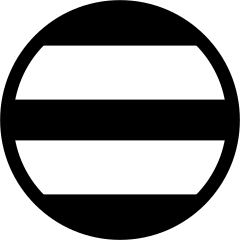Difference between revisions of "Language/Multiple-languages/Culture/Traditional-Symbols-and-Motifs:-Eastern-Asia"
| Line 2: | Line 2: | ||
This page features translations of symbol and motif terms in different languages from Western Africa, accompanied by pictures. | This page features translations of symbol and motif terms in different languages from Western Africa, accompanied by pictures. | ||
== Arrow Splash == | |||
{| class="wikitable" | |||
!Japanese | |||
|- | |||
|矢絣 | |||
やがすり | |||
|} | |||
Yamato: | |||
https://upload.wikimedia.org/wikipedia/commons/thumb/c/cd/Yagasuri_patan.png/360px-Yagasuri_patan.png | |||
== Auspicious Clouds == | == Auspicious Clouds == | ||
| Line 34: | Line 46: | ||
https://upload.wikimedia.org/wikipedia/commons/thumb/0/08/ChunTei_Black_Fu_CNS11643_Kai.svg/240px-ChunTei_Black_Fu_CNS11643_Kai.svg.png | https://upload.wikimedia.org/wikipedia/commons/thumb/0/08/ChunTei_Black_Fu_CNS11643_Kai.svg/240px-ChunTei_Black_Fu_CNS11643_Kai.svg.png | ||
== | == Blue Sea Wave == | ||
{| class="wikitable" | {| class="wikitable" | ||
! | !Japanese | ||
|- | |- | ||
| | |青海波 | ||
せいがいは | |||
|} | |} | ||
Yamato: | |||
https://upload.wikimedia.org/wikipedia/commons/ | https://upload.wikimedia.org/wikipedia/commons/b/be/%E6%97%A5%E6%9C%AC%E3%81%AE%E4%BC%9D%E7%B5%B1%E6%96%87%E6%A7%98%E3%81%AB%E3%81%8A%E3%81%91%E3%82%8B%E4%BB%A3%E8%A1%A8%E4%BE%8B%EF%BC%9C%E9%9D%92%E6%B5%B7%E6%B3%A2%EF%BC%9E.jpg | ||
== | == Circular Form == | ||
This symbol is | This symbol is used in Zen and means the absolute enlightenment, strength, elegance, the universe, the void. | ||
{| class="wikitable" | {| class="wikitable" | ||
! | !Japanese | ||
|- | |- | ||
| | |円相 | ||
えんそう | |||
|} | |} | ||
Yamato: | |||
https://upload.wikimedia.org/wikipedia/commons/thumb/ | https://upload.wikimedia.org/wikipedia/commons/thumb/6/68/Enso.svg/244px-Enso.svg.png | ||
== | == Double Happiness == | ||
The character “double happiness” is used for the marriage. | |||
{| class="wikitable" | {| class="wikitable" | ||
! | !Chinese | ||
|- | |- | ||
| | |囍 | ||
ㄕㄨㄤ ㄒㄧˇ; soeng<sup>1</sup> hei<sup>2</sup> | |||
|} | |} | ||
Han: | |||
https://upload.wikimedia.org/wikipedia/commons/thumb/ | https://upload.wikimedia.org/wikipedia/commons/thumb/e/e6/Double_happiness.svg/240px-Double_happiness.svg.png | ||
== | == Emblem == | ||
These symbols are Japanese emblems to represent identities. | These symbols are Japanese emblems to represent identities. | ||
| Line 133: | Line 141: | ||
|} | |} | ||
== | == Endless Knot == | ||
This symbol is one of the eight auspicious signs in Indian religions. | |||
{| class="wikitable" | {| class="wikitable" | ||
!Chinese | |||
!Tibetan | |||
|- | |||
|盤長/盘长 | |||
ㄆㄢˊ ㄔㄤˊ; pun<sup>4</sup> coeng<sup>4</sup> | |||
|དཔལ་བེའུ་། | |||
|} | |||
Tibetan: | |||
https://upload.wikimedia.org/wikipedia/commons/thumb/0/0c/Endlessknot.svg/307px-Endlessknot.svg.png | |||
== Endless Swastika == | |||
{| class="wikitable" | |||
!Chinese | |||
!Japanese | !Japanese | ||
|- | |- | ||
| | |萬字不到頭/万字不到头 | ||
ㄨㄢˋ ㄗˋ ㄅㄨˊ ㄉㄠˋ ㄊㄡˊ; maan<sup>6</sup> zi<sup>6</sup> bat<sup>1</sup> dou<sup>3</sup> tau<sup>4</sup> | |||
|紗綾形 | |||
さやがた | |||
|} | |} | ||
Yamato: | Yamato: | ||
https://upload.wikimedia.org/wikipedia/commons/ | https://upload.wikimedia.org/wikipedia/commons/thumb/c/c3/Sayagata.svg/480px-Sayagata.svg.png | ||
== Supreme Ultimate == | == Supreme Ultimate == | ||
| Line 186: | Line 212: | ||
https://upload.wikimedia.org/wikipedia/commons/thumb/3/3b/Japanese_Map_symbol_%28Temple%29.svg/240px-Japanese_Map_symbol_%28Temple%29.svg.png | https://upload.wikimedia.org/wikipedia/commons/thumb/3/3b/Japanese_Map_symbol_%28Temple%29.svg/240px-Japanese_Map_symbol_%28Temple%29.svg.png | ||
==Other lessons== | ==Other lessons== | ||
Revision as of 18:22, 14 May 2023

This page features translations of symbol and motif terms in different languages from Western Africa, accompanied by pictures.
Arrow Splash
| Japanese |
|---|
| 矢絣
やがすり |
Yamato:

Auspicious Clouds
| Chinese | Japanese |
|---|---|
| 祥雲/祥云
ㄒㄧㄤˊ ㄩㄣˊ; coeng4 wan4 |
瑞雲
ずいうん |
Han:

Yamato:

Blessing
The character “blessing” is used in the new year, often hanged up-side-down, because “up-side-down” and “arrive” are homophones.
| Chinese |
|---|
| 福字
ㄈㄨˊ ㄗˋ; fuk1 zi6 |
Han:

Blue Sea Wave
| Japanese |
|---|
| 青海波
せいがいは |
Yamato:

Circular Form
This symbol is used in Zen and means the absolute enlightenment, strength, elegance, the universe, the void.
| Japanese |
|---|
| 円相
えんそう |
Yamato:

Double Happiness
The character “double happiness” is used for the marriage.
| Chinese |
|---|
| 囍
ㄕㄨㄤ ㄒㄧˇ; soeng1 hei2 |
Han:

Emblem
These symbols are Japanese emblems to represent identities.
More at https://irohakamon.com/
| Japanese |
|---|
| 紋
もん |
Yamato:
| name | image |
|---|---|
| 織田木瓜
おだもっこう |

|
| 加賀梅鉢
かがうめばち |

|
| 五七桐
ごしちきり |

|
| 仙台笹
せんだいささ |

|
| 武田菱
たけだびし |

|
| 長門三つ星
ながとみつぼし |

|
| 丸に十文字
まるにじゅうもんじ |

|
| 丸に七つ片喰
まるにななつかたばみ |

|
| 丸の内に二つ引き
まるのうちにふたつひき |

|
| 三つ盛り亀甲に花菱
みつもりきっこうにはなびし |

|
Endless Knot
This symbol is one of the eight auspicious signs in Indian religions.
| Chinese | Tibetan |
|---|---|
| 盤長/盘长
ㄆㄢˊ ㄔㄤˊ; pun4 coeng4 |
དཔལ་བེའུ་། |
Tibetan:

Endless Swastika
| Chinese | Japanese |
|---|---|
| 萬字不到頭/万字不到头
ㄨㄢˋ ㄗˋ ㄅㄨˊ ㄉㄠˋ ㄊㄡˊ; maan6 zi6 bat1 dou3 tau4 |
紗綾形
さやがた |
Yamato:

Supreme Ultimate
| Chinese | Japanese | Korean |
|---|---|---|
| 太極/太极
ㄊㄞˋ ㄐㄧˊ; taai3 gik6 |
太極
たいきょく |
태극
太極 |
Han:

Korean:

Swastika
| Chinese | Japanese | Korean | Mongolian | Tibetan |
|---|---|---|---|---|
| 卍字
ㄨㄢˋ ㄗˋ; maan6 zi6 |
卍字
まんじ |
만자
卍字 |
хас
ᠬᠠᠰ |
གཡུང་དྲུང་ |
Yamato:

Other lessons
- Philosophical and Religious Texts
- Different ways to greet in the world
- Comparison of Advanced FLOSS Tools for Learning
- Traditional Architectures: Polynesia
- Traditional Architectures: Northern America
- Techniques for learning languages
- Websites of Classified Advertisement
- Best Singers
- The Future of AI – A Look at Possible Directions
- Meanings of Country Names
- How to Study with a Markup Language
- Traditional Architectures: Southern Europe
- Productivity tools for polyglots
- Good Memories
- Tabletop Games